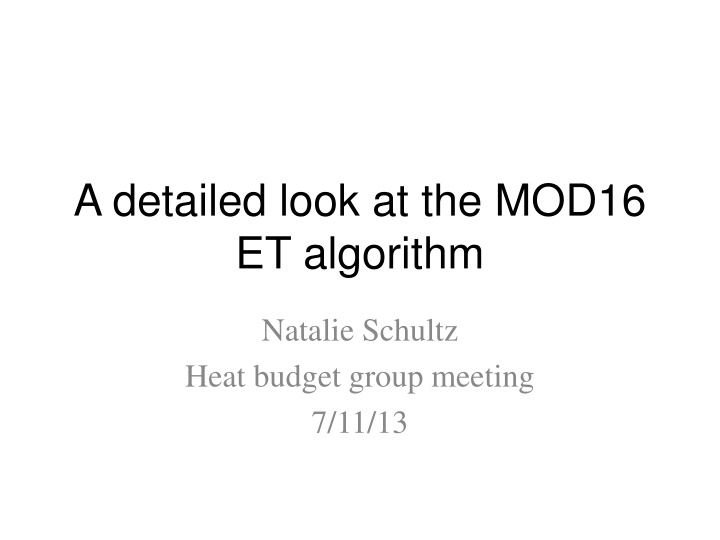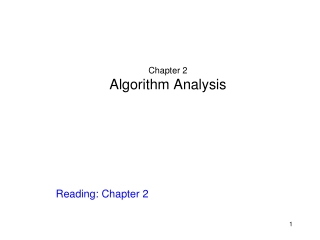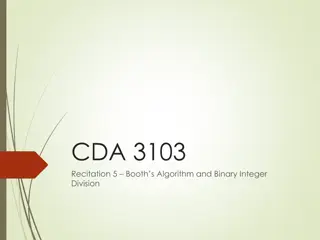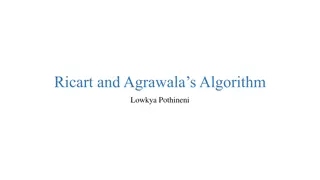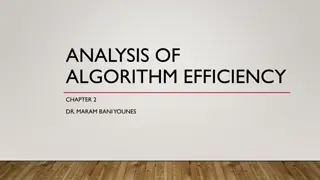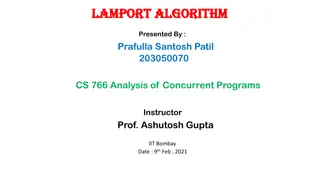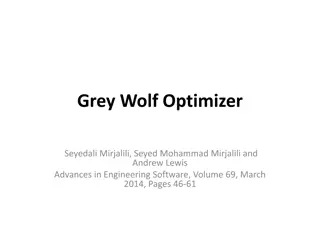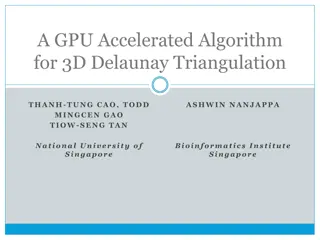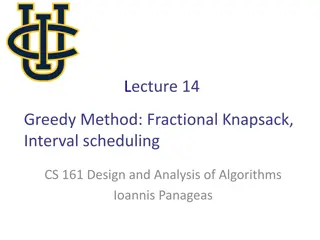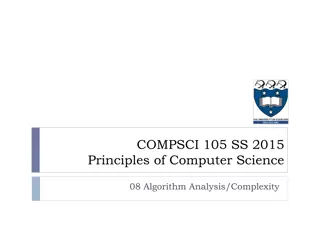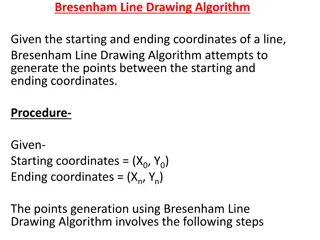Comprehensive Overview of MOD16 ET Algorithm
This detailed look into the MOD16 ET algorithm covers its global dataset, remote sensing methods for ET estimation, Penman-Monteith equation, data sources, and gap filling techniques. The algorithm's logic and key components are highlighted, offering valuable insights for research and application.
Download Presentation

Please find below an Image/Link to download the presentation.
The content on the website is provided AS IS for your information and personal use only. It may not be sold, licensed, or shared on other websites without obtaining consent from the author.If you encounter any issues during the download, it is possible that the publisher has removed the file from their server.
You are allowed to download the files provided on this website for personal or commercial use, subject to the condition that they are used lawfully. All files are the property of their respective owners.
The content on the website is provided AS IS for your information and personal use only. It may not be sold, licensed, or shared on other websites without obtaining consent from the author.
E N D
Presentation Transcript
A detailed look at the MOD16 ET algorithm Natalie Schultz Heat budget group meeting 7/11/13
MOD16 Global 1km2dataset of ET, LE, PET, PLE for 109.03 million km2of global vegetated land Computed daily Produced at 8-day, monthly, annual intervals Available from 2000-2012 Currently available through group s website: U Montana. According to Mu 2011, this algorithm has been submitted to NASA for full review to be available through the MODIS Land product DAAC.
Remote sensing ET methods 1) Empirical or statistical methods link measured or estimated ET with remotely sensed vegetation indices 2) Physical models that calculate ET as the residual of the surface energy balance (SEB) relies heavily on LST measurements 3) Other physical models such as Penman-Monteith that include the main drivers of ET includes surface energy partitioning processes & environmental constraints on ET not overly sensitive to any one input
Penman-Monteith equation ? =? ? + ? ?? (???? ?)/?? ? + ? (1 + ??/??) Cp = specific heat capacity of air ra = aerodynamic resistance rs = surface resistance = psychrometric constant E = latent heat flux = latent heat of evaporation s = d(esat)/dT A = available energy = air density
ET algorithm logic ?? = ??????+ ???????+ ?????? Mu, et al. 2011
Data sources MODIS data Meteorological data 1.0 1.25 GMAO solar radiation air temperature air pressure humidity non-linearly interpolated to 1km2 pixel level based on four surrounding pixels Land cover type (MOD12Q1) FPAR & LAI (MOD15A2) albedo (MOD43C1) Linear interpolation used to fill missing/unreliable data
Gap filling & Interpolation Zhao, et al. 2005
MODIS Land Cover Type Biome Properties Look-Up Table (BPLUT) Mu, et al. 2011
MODIS FPAR & LAI Fraction of absorbed photosynthetically active radiation (FPAR) used as surrogate for vegetative cover fraction (FC) ??= ???? Leaf area index (LAI) used to scale leaf-scale parameters to canopy-scale
MODIS Albedo Used to calculate net radiation (Rnet) ????= 1 ? ?? + ?? ?? ? ?4 Then to calculate A for the vegetation canopy and soil: ? = ???? ??= ?? ? ?????= 1 ?? ? ?
ET components ?? = ??????+ ???????+ ?????? partitioned using vegetation fraction estimated from FPAR wet canopy fraction (Fwet) estimated from relative humidity Etrans (1- Fwet) Esoil = Esat + Emoist
Results Mu, et al. 2011
Old version vs. improved version Mu, et al. 2011
Comparison with flux towers Mu, et al. 2011
Uncertainties 1) Input data uncertainties 2) Inaccuracies in measured data 3) Flux tower vs. MODIS footprint size 4) Algorithm limitations/assumptions 5) Land cover misclassifications
Conclusions MOD16 useful tool for examining global terrestrial water and energy cycles, and environmental change. At smaller spatial scales, there may be biases between MOD16 and surface measurements. Validation using surface measurements.
